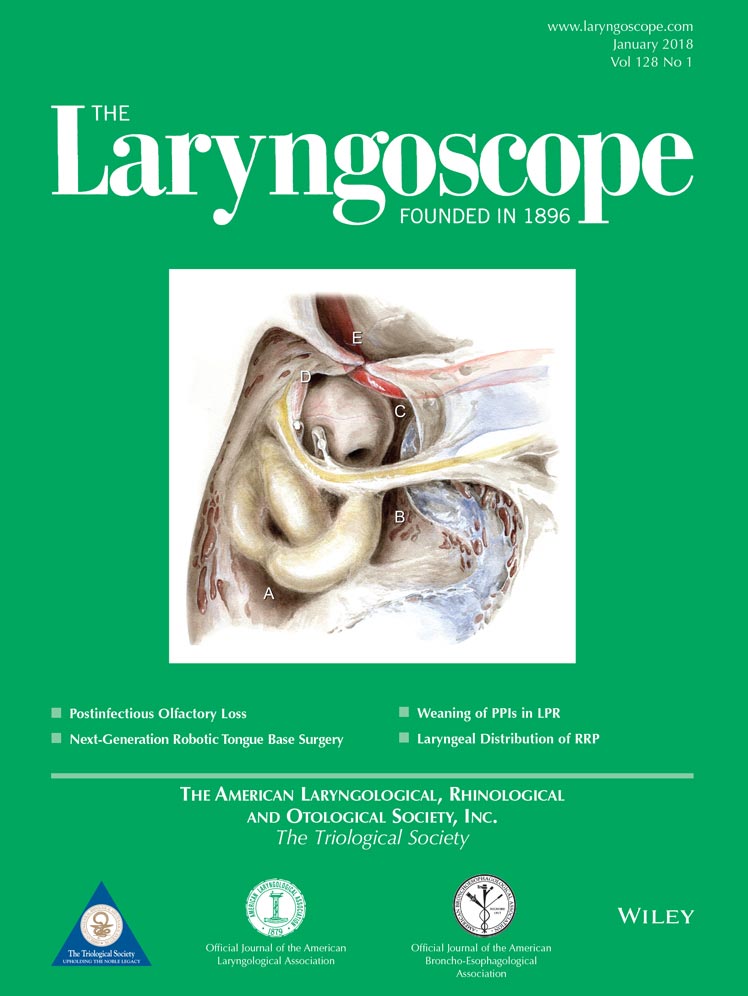Endoscopic anterior–posterior cricoid split for pediatric bilateral vocal fold paralysis
The authors have no funding, financial relationships, or conflicts of interest to disclose.
Abstract
Objectives/Hypothesis
Children with bilateral true vocal fold immobility (BTVFI) may present with significant airway distress necessitating tracheostomy. The objective of this study was to review our preliminary experience with the anterior–posterior cricoid split (APCS), an endoscopic intervention used as an alternative to tracheostomy in children with BTVFI.
Study Design
Multicenter review.
Methods
A review of patients undergoing endoscopic APCS for BTVFI at four institutions was performed. Patients were evaluated for the ability to ventilate without the requirement for tracheostomy or reintubation. Additional data extracted included the duration of intubation following APCS, the requirement for additional procedures, and demographics. Surgical success was defined as the ability to avoid tracheostomy and to cap or decannulate without respiratory symptoms if a tracheostomy was present prior to APCS.
Results
Nineteen APCS procedures were performed between October 2010 and June 2016. There were 12 male patients, the mean age at APCS was 4.7 months. BTVFI was primarily idiopathic (58%) and associated with other comorbidities (74%). All patients were candidates for tracheostomy prior to APCS. Fourteen patients (74%) were considered surgical successes. Of the unsuccessful patients, three (66%) required tracheostomy following APCS, and one was treated with a posterior cartilage graft. There was one nonsurgical mortality greater than 2 months after APCS and thought to be unrelated to the airway.
Conclusions
Endoscopic APCS appears to be a safe and effective intervention for pediatric BTVFI. Under the correct circumstances, this can be performed as a single procedure, obviating tracheostomy. Further study is warranted.
Level of Evidence
4. Laryngoscope, 128:257–263, 2018




